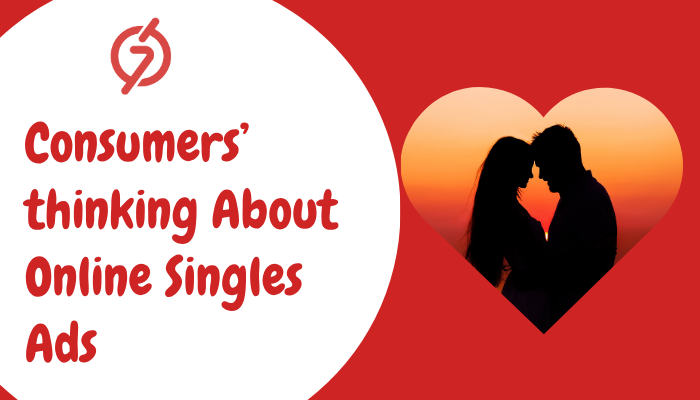Market Insight
Online dating isn’t a fringe activity anymore; it’s a global industry worth more than $10 billion. Every month, millions of users scroll, swipe, and click through platforms that promise to help them find love. Yet, what often gets overlooked is how much advertising shapes that experience. Singles ads aren’t just filling sidebars anymore—they’re steering decisions, building curiosity, and even setting expectations before someone joins a dating platform.
For advertisers, that makes Singles ads one of the most emotion-driven and high-intent categories in digital marketing. But what do consumers really think when they see these ads? And how can advertisers make them more effective without crossing into cliché territory?
The Advertiser’s Challenge
The biggest challenge advertisers face in the singles and dating vertical isn’t just attracting attention—it’s earning trust.
In most categories, users scroll past irrelevant ads without much thought. But in dating, relevance and authenticity matter far more. Consumers approach singles ads with mixed feelings. Some are curious, others skeptical. Many have seen overpromises before: perfect matches, instant chemistry, flawless profiles. These tropes have turned once-effective ad angles into noise.
As a result, ad fatigue sets in fast. Even when targeting and bidding are right, conversions can lag because audiences don’t believe what they’re seeing. That’s a credibility gap most advertisers don’t account for. And it explains why high impressions often don’t translate to engagement.
What Consumers Really Think
When surveyed, users describe their first reaction to a singles ad as “curious but cautious.” They might click if the message feels genuine or relatable, but anything that sounds pushy, exaggerated, or too polished instantly triggers suspicion.
Interestingly, consumers respond more to realism than perfection. Ads showing real moments or diverse stories get longer engagement times and better post-click performance. The underlying insight here is simple: consumers want honesty, not hype.
Singles advertising isn’t like selling gadgets or subscriptions—it’s selling a possibility. That means emotional nuance matters as much as targeting. Small changes in copy and imagery can alter perception in big ways.
The best-performing singles ad network campaigns use soft tones, conversational copy, and creative that suggests connection rather than guarantees it. It’s the difference between “Find your soulmate today” and “Meet someone who shares your vibe.” The second approach feels safer, more believable, and more human.
Smarter Ad Strategies
Advertisers who study audience psychology can easily improve performance without spending more. The key is designing Singles advertising that fits into a user’s browsing context instead of interrupting it.
Instead of flashy images or unrealistic claims, focus on trust-driven creative:
- Use conversational headlines that echo how people talk about dating, not how marketers describe it.
- Keep visuals simple and inclusive. Avoid overly retouched photos or generic stock couples.
- Highlight the value of the experience (meeting someone real, starting meaningful conversations) rather than promising outcomes you can’t control.
When done right, these details build familiarity that earns clicks organically. To dive deeper into ad optimization techniques, check out this helpful guide:
Optimize Singles Ads for More Clicks
It walks through audience segmentation, ad testing, and engagement strategies specific to the dating vertical—insights that can cut your trial-and-error time in half.
The Subtle Power of Context
Another underrated factor in singles advertising is placement. Where your ad appears is just as important as what it says. Running a heartfelt, story-led ad on a humor site might backfire, while the same creative on a lifestyle or wellness platform might thrive.
That’s why using a specialized network for Singles Ads helps advertisers connect their campaigns to the right environment. These networks understand tone sensitivity, niche targeting, and compliance—crucial elements when dealing with romantic intent and personal data.
Singles ads are not just digital banners; they’re emotional entry points. When placed thoughtfully, they feel less like marketing and more like gentle introductions.
What the Best Advertisers Get Right
The highest-performing campaigns share a few consistent patterns:
They talk to people, not profiles.
Copywriting that mirrors natural human conversation drives empathy. Instead of commands (“Sign up now”), successful ads invite (“Want to meet someone new?”).
They respect the user’s emotional state.
Singles exploring dating apps may be hopeful, nervous, or cautious. Ads that reflect that emotional reality—without exploiting it—feel authentic and build trust faster.
They test relentlessly.
Smart advertisers don’t rely on guesswork. They run A/B tests on copy, imagery, and audience segments until they understand what sparks genuine interest.
They optimize post-click experience.
Even a great ad loses value if the landing page feels mismatched or cluttered. Keeping the design simple and consistent with ad tone sustains user interest.
When advertisers build campaigns around these principles, click-through rates rise naturally. It’s not magic—it’s empathy scaled through design and data.
Consumer Perception and the Honesty Premium
In today’s market, users reward transparency. Singles ads that own their intent—helping people meet others—perform better than those that disguise it behind lifestyle imagery or vague messaging.
That’s partly why audience sentiment toward dating ads is evolving. The stigma that once surrounded online dating has faded, replaced by an expectation of authenticity. Consumers don’t mind seeing singles ads; they just want them to feel relevant, tasteful, and emotionally intelligent.
The real test for advertisers isn’t how many people click—it’s how many believe the message enough to continue the journey.
And that’s where honest creative earns what could be called the “honesty premium.” When users sense transparency, their engagement deepens. That’s measurable value.
Next Step for Advertisers
If you’re planning to start in the singles or dating space, the smartest move is to start with insight instead of assumption. You don’t need a huge budget—just the right tools and audience understanding.
You can register and start testing singles campaigns through trusted networks that specialize in this vertical. You can Create an Ad Campaign right here.
Start small, test creative variations, and track user behavior closely. Once you see what resonates, scale confidently.
Conclusion
At the end of the day, singles ads aren’t just about metrics or impressions—they’re about people. Each click represents curiosity, maybe even hope. Advertisers who remember that will always craft better campaigns.
Consumers don’t hate singles ads. They just dislike being underestimated. When brands speak like humans and respect the emotions behind the click, the conversation changes.
So if you’re in this space, treat every ad as an introduction, not a transaction. That small mindset shift can turn a routine campaign into something that actually connects.
 :
https://www.pinterest.com/7search_ppc_ads/
:
https://www.pinterest.com/7search_ppc_ads/

